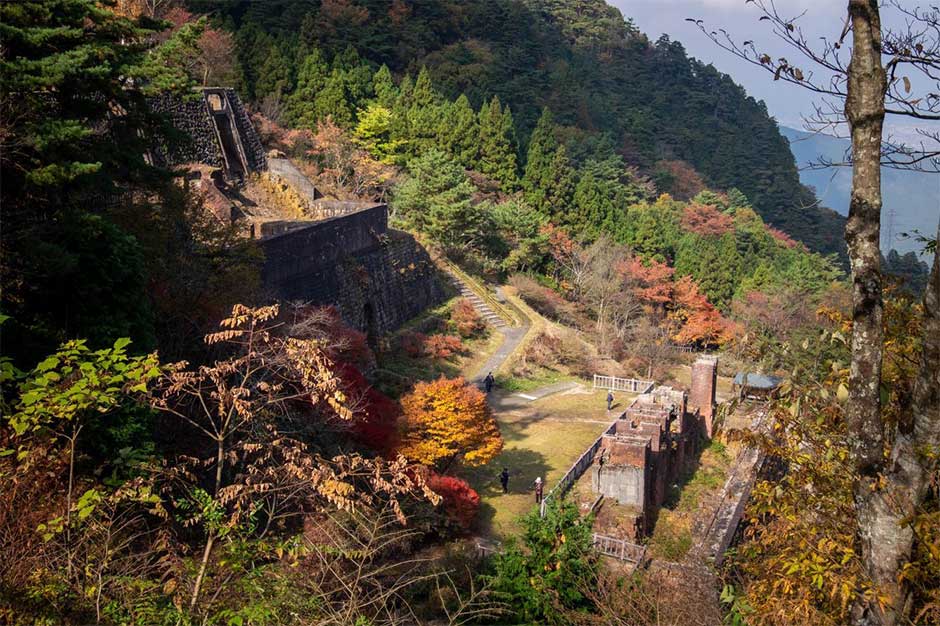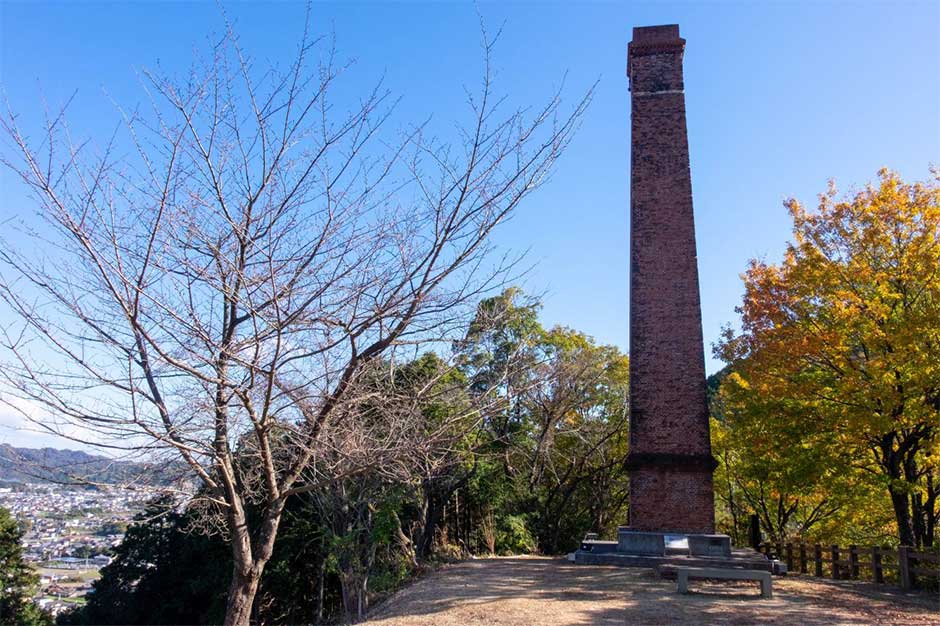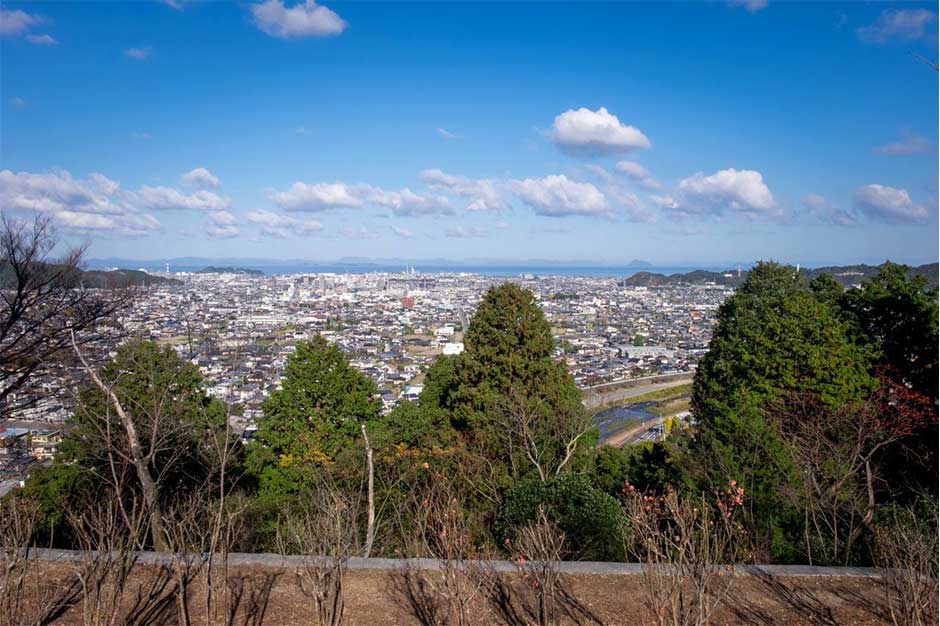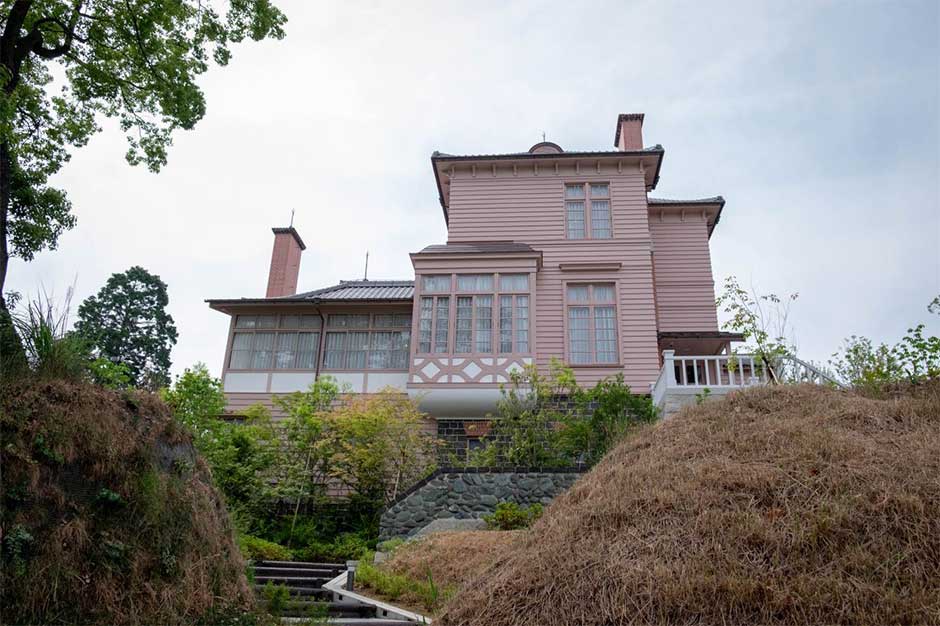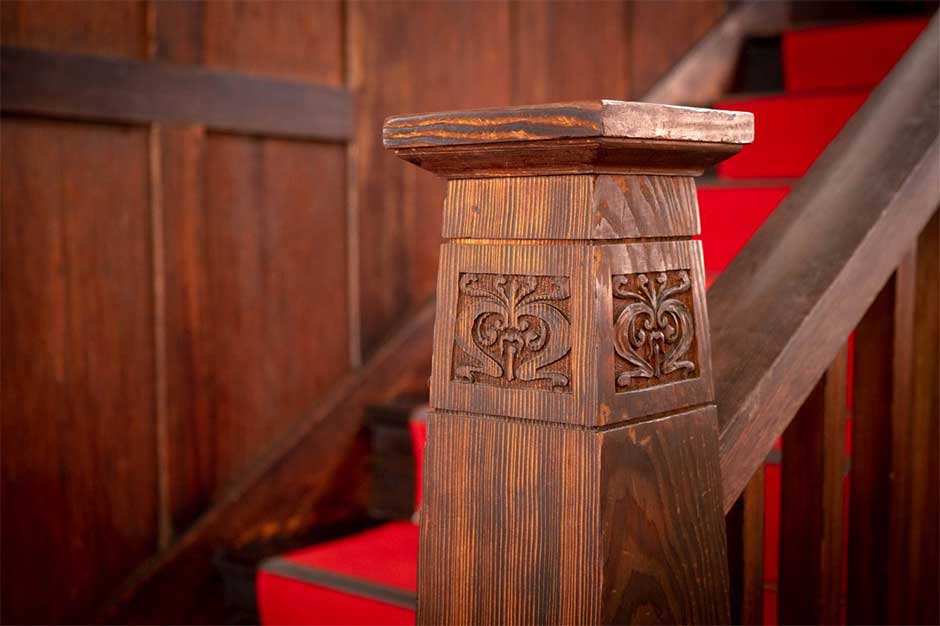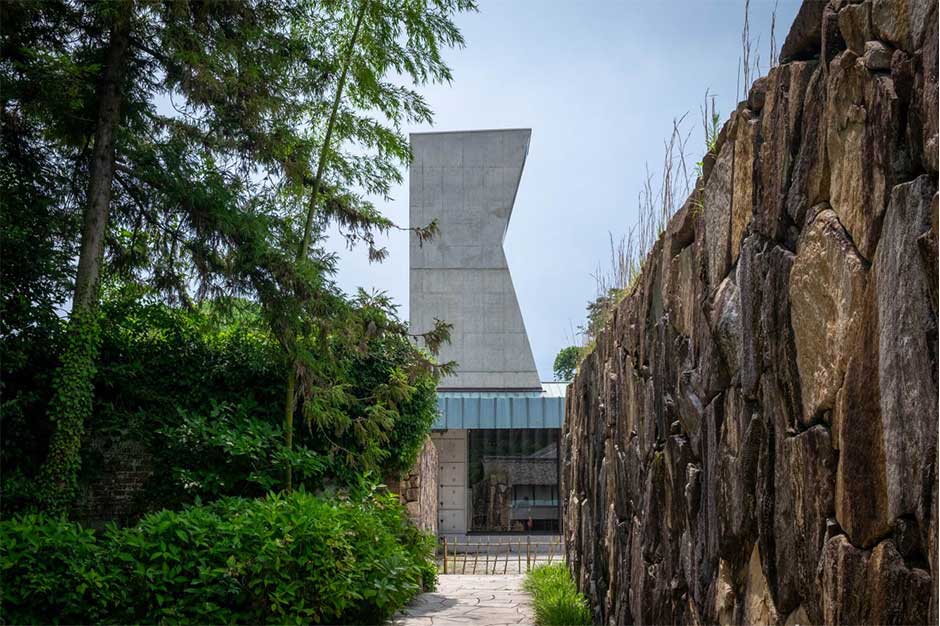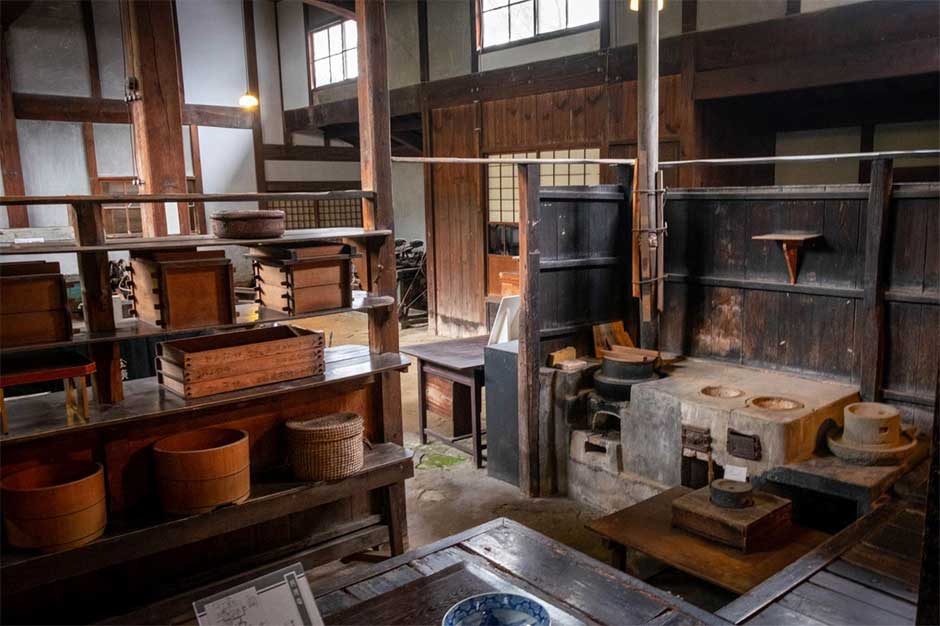Besshi Copper Mine Memorial Museum
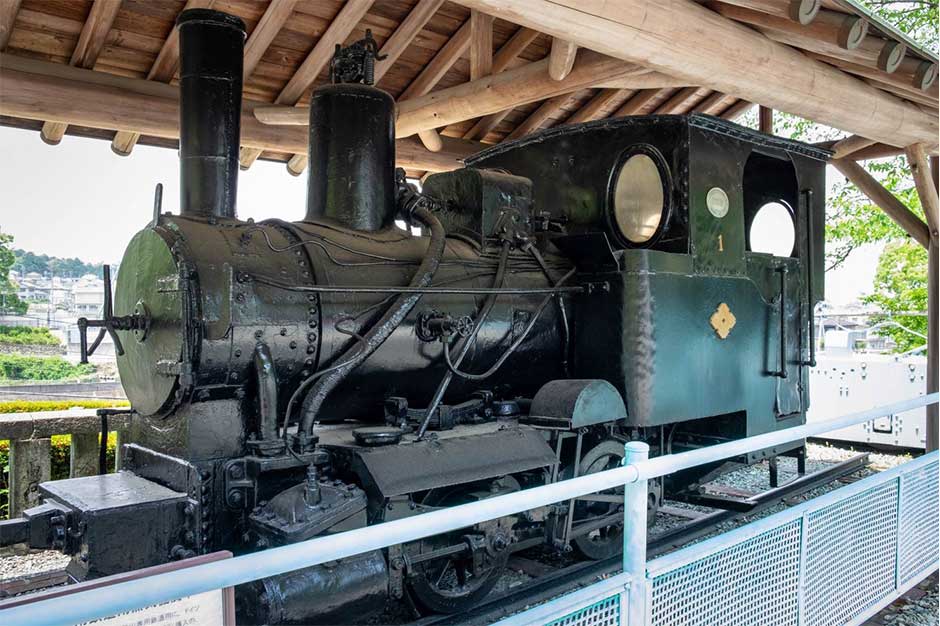
The Besshi Copper Mine Memorial Museum is located in the valley below the mine. It stands in the grounds of Ōyamazumi Shrine, which enshrines the guardian spirit of Besshi Copper Mine. The museum building is built into the ground, recalling the mine, and its roof is planted with azaleas, which bloom in vivid pinks in May. In front of the museum is a steam locomotive used on the mine railway, and also an electric locomotive and rolling stock.
The museum has exhibition areas on five themes; the history of Besshi and Sumitomo, the daily life of the miners, the geology that produced copper, mining techniques, and the story of how smoke pollution from copper smelting was overcome. Exhibits include models and dioramas, various products made of copper, prints from the Edo period, evocative photos, geological samples, and tools and clothing used by the miners.

Entry to the museum is free. Visits to the other museums and sites related to the copper mine are recommended.
